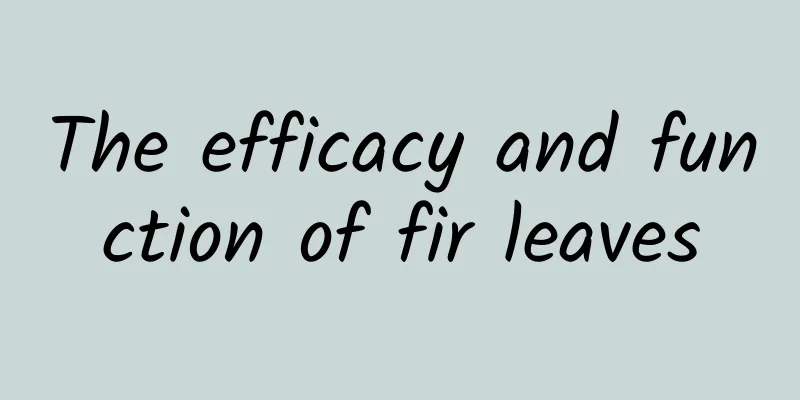The efficacy and function of fir leaves

|
Fir is a common plant in my country. This plant can usually be seen on the streets of the south. The leaves of fir are quite special, not only because its leaves are strip-shaped, but also because its leaves can be used as medicine to treat many diseases, and some of them have miraculous effects, just like we can use fir leaves when we have burns. So what are the effects and functions of fir leaves? Introduction of Sugileaf 【Common name】Sugi leaf [Source] It is the young leaves or blades of the plant Cryptomeria japonica of the Taxaceae family. The plant morphology is detailed in the "Cunninghamia lanceolata" entry. The efficacy and function of fir leaves Treat chronic tracheitis, toothache, pemphigus, and burns. Usage and dosage of fir leaf For internal use: decoct in water, 0.5-1 liang. For external use: decoct in water for gargling, mash into juice for application, or grind into powder for application. Taboos of using cedar leaves Do not overdose. Selection of fir leaves ① Treat tooth swelling caused by wind: 3 liang of Chinese fir leaves, 2 liang each of chuanxiong and asarum. Cut the above three ingredients, add 4 liters of wine, boil and reduce to 2.5 liters. Sip it in your mouth and wait for it to dry out. Do not swallow it. (Sugar Leaf Soup from "Emergency Prescription") ②Treat pemphigus: appropriate amount of fresh fir leaves. Mash the juice and apply externally. (Jiangxi Herbal Medicine) Further reading: Clinical applications To treat chronic bronchitis, take 3.2 liang (10 liang) of fresh fir leaves, boil them for 4 hours, filter, concentrate the filtrate, add 50% syrup to make 30 ml of fir leaf syrup. Take it in 3 doses after meals for 10 consecutive days. A total of 407 cases were observed (most of them were over 50 years old), including 321 cases of simple type, 20 cases (6.2%) were controlled in the near future, 50 cases (15.5%) were significantly improved, 168 cases (52.5%) were improved, the total effective rate was 74.1%, and 83 cases (25.9%) were ineffective; 86 cases of wheezing type, 3 cases (3.5%) were controlled in the near future, 15 cases (17.4%) were significantly improved, 47 cases (54.6%) were improved, the total effective rate was 75.6%, and 21 cases (24.4%) were ineffective. The effective rates for cough, sputum and asthma are 71.8%, 70.1% and 62.2% respectively. |
<<: The efficacy and function of Artemisia seeds
>>: The efficacy of Gynostemma pentaphyllum and honeysuckle
Recommend
The efficacy and function of the traditional Chinese medicine Rosa laevigata
Traditional Chinese medicine is very common. This...
Personality changes after a stroke? Don’t panic! This is not pretentiousness, it’s the brain asking for help
After Grandpa Zhang was discharged from the hospi...
Chinese herbal medicine for tumor elimination
Tumor diseases are generally serious and they ten...
What are the medicinal properties of Xanthium sibiricum
Xanthium sibiricum is a traditional Chinese medic...
The efficacy and function of swollen foot fern
Swelling foot fern is a kind of traditional Chine...
Toothache, sore throat, neck and back pain may be your heart sounding the alarm!
Staying up late, working overtime, and being unde...
The efficacy and function of Luanhua
Traditional Chinese medicine often has unexpected...
The efficacy and role of large-leaf green woodruff [picture]
Traditional Chinese medicine is very helpful in t...
The efficacy and function of bitter bamboo shoots
As a traditional Chinese medicine, bitter bamboo ...
Animal "hard work" red and black list to see which animal is the laziest?
Today is May 1st International Labor Day. Labor i...
It is rare to see 51% alcohol liquor on the table. Chemists: Because it tastes a bit strange
In 1153, the Jin Dynasty moved its capital from S...
The efficacy and function of the penis
People in the health care industry will be more f...
Potatoes, an overlooked staple food
When it comes to potatoes, what is your first rea...
A chart to understand the 2024 industry technology issues: independent and controllable high-performance GPU chip development
On July 2, at the main forum of the 26th Annual C...









